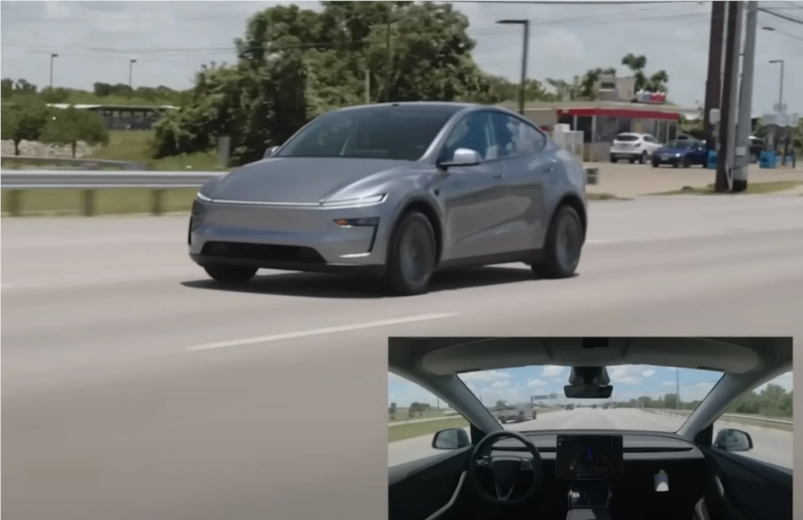Tesla Completes First Autonomous Vehicle Delivery in Austin
Tesla Completes First Autonomous Vehicle Delivery in Austin
Tesla has reached a new milestone in autonomous driving by completing the first-ever autonomous delivery of a customer vehicle. A Model Y SUV successfully navigated a 15-mile journey from Tesla's factory to a customer's apartment in Austin, Texas, without any human intervention. CEO Elon Musk hailed the achievement as a significant step forward for the company's self-driving technology.
The Autonomous Journey
The Model Y was equipped with the same software used in Tesla's limited autonomous taxi service in Austin. However, upon delivery, the vehicle was downgraded to the commercially available Full Self-Driving (Supervised) software, which requires driver attention at all times. Musk emphasized that no remote assistance was used during the delivery, and the vehicle operated entirely on its own.

Timing and Market Impact
The announcement comes ahead of Tesla's second-quarter delivery and financial results, which are expected to be closely scrutinized following a sales decline in 2024 and controversies surrounding Musk's involvement in political affairs. The news initially boosted Tesla's stock, though gains were later pared back.
Technical Challenges and Industry Context
The 30-minute trip included complex scenarios such as highway lane changes, right turns on red lights, and unprotected left turns—challenges that have historically been difficult for autonomous vehicles. Tesla released a condensed video of the journey, showcasing the vehicle's ability to handle real-world traffic conditions.
While Tesla's achievement is notable, competitors like Waymo and Zoox have also made strides in autonomous driving. Waymo has been testing vehicles on highways in Los Angeles and Phoenix, while Zoox conducted a high-speed test in Las Vegas earlier this year.
Lingering Questions
The demonstration has sparked debate about the preparation involved. Critics point to Tesla's 2016 "self-driving" video, which was later revealed to be staged with pre-mapped routes and safety operators. Additionally, some speculate whether Tesla used vehicles equipped with lidar or other external sensors for this delivery, given their use in limited taxi trials.
The key question remains: Can Tesla's software safely replicate this feat thousands of times without human intervention? While one successful trip is impressive, consistent reliability is the true benchmark for autonomous technology.
Key Points
- Tesla completed its first autonomous delivery of a customer vehicle in Austin.
- The Model Y traveled 15 miles without human intervention or remote assistance.
- The achievement comes ahead of Tesla's Q2 financial results amid market scrutiny.
- Competitors like Waymo and Zoox are also advancing in autonomous driving.
- Questions persist about preparation methods and repeatability.